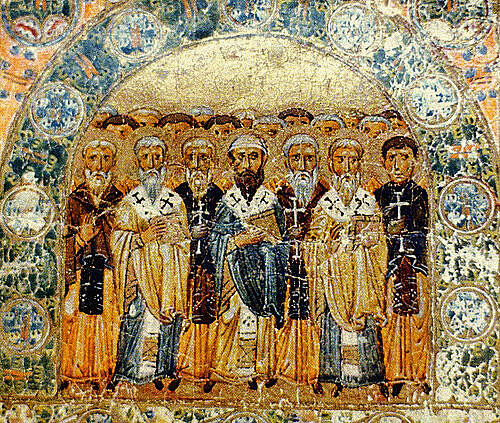
Reading the Fathers of the Church was one of the reasons that led Blessed John Henry Newman to the Catholic Church, though it meant leaving his prestigious Oxford career within the Anglican Church behind him. What convinced him was that the Fathers universally defended doctrines, that were the depositum fidei from the beginning and not simply added on later. This also holds true for beliefs regarding the blessed Mother. Though the Marian dogmas were only formally declared later, their seeds were present from the start. In the 3rd century, we see Church Fathers like Origen, Tertullian and Clement of Alexandria holding up Mary as Thetokos-Mother of God, as well as her virginity.
The Development of Marian Doctrine
However, this does not mean that everything was already crystal-clear or went uncontested. The Church Fathers were grappling with some issues, sometimes overstating their case vis-à-vis heretics and hence getting things wrong themselves. Tertullian, for example, emphasizes Mary’s maternity in the incarnation of Christ against the Docetists (who denied Christ’s material body), as well as her virginity until the birth of Christ, at which point he believes she lost it. He came to that conclusion because of his insistence of Christ possessing a real body, but failed to do justice to the mysteries of the faith for the sake of clarity and since he was driven by a polemical spirit. On the other hand, Clement of Alexandria “witnesses to the Church’s faith in the mystery of Mary’s perpetual virginity”.[1] More than that, Mary becomes for him the model of the mystery of the Church. For Origen as well, Mary’s perpetual virginity is an “integral part of the deposit of faith”.[2] It is part and parcel of the faith from the beginning, even if some confusions arise.
The Virgin Mary in the liturgy
Mary is clearly part of the apostolic tradition from the beginning. She is mentioned twice at the center of the Eucharistic celebration, during the anaphora, when the celebrant gives thanks. During the rite of baptism in the Easter Vigil, which contains the oldest example of the Apostolic Creed, the catechumen is asked: “Do you believe in Jesus Christ, the Son of God, who was born of the Holy Spirit and the Virgin Mary?” Hence at the heart of the liturgy and baptism, the virginal conception and birth of Christ from the Holy Spirit and the Virgin are remembered. She is essential to the mystery of the Incarnation. These formulations would find their final form in the Creed of Constantinople: “By the power of the Holy Spirit he was born of the Virgin Mary and became man.”
Devotion to the Virgin Mary
But perhaps most moving is the earliest known prayer to the Blessed Mother, namely the “Sub Tuum Praesidium” (“Beneath your compassion we take refuge”) which was discovered on a Greek papyrus in Egypt in 1917. It was written no later than the third century and the prayer is probably even older. It expresses beautifully the trust of the Early Church towards the blessed Mother to whom believers can turn with confidence.
[1] Luigi Gambero, Mary and the Fathers of the Church: The Blessed Virgin Mary in Patristic Thought, transl. by Thomas Buffer. San Francisco/ CA: Ignatius, 1999, p. 70
[2] Ibid. 75
Marie Meaney